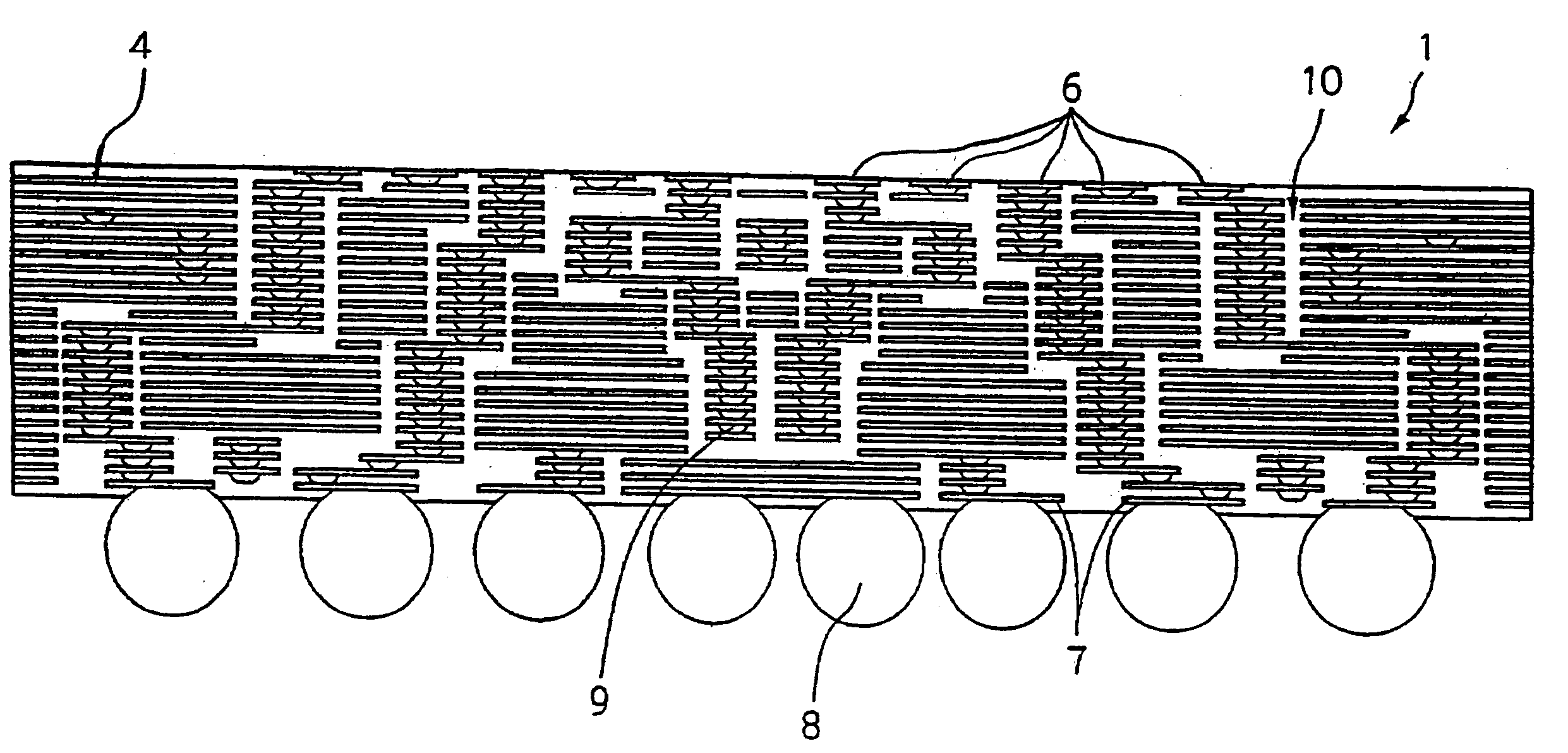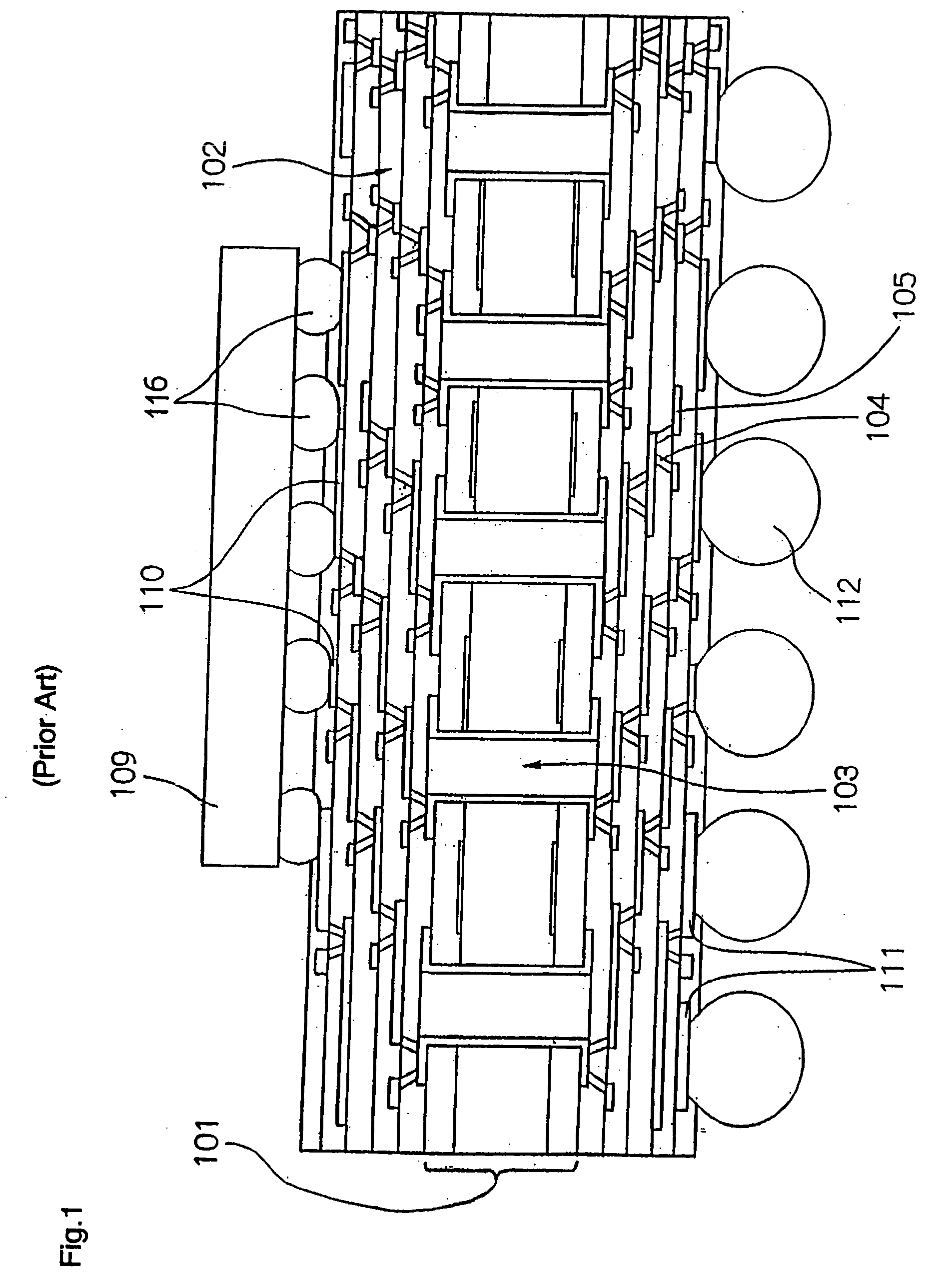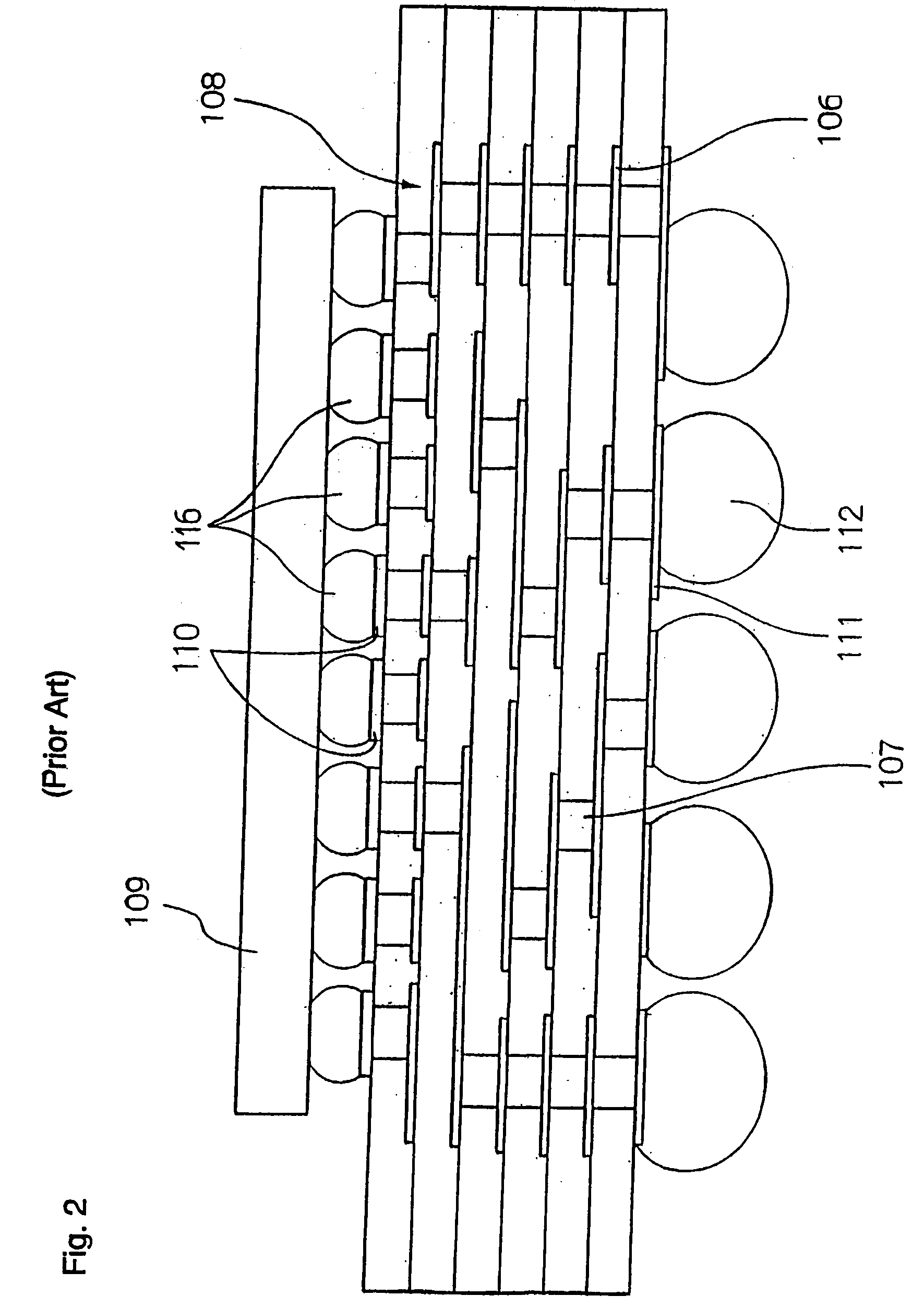Package substrate for a semiconductor device, a fabrication method for same, and a semiconductor device
a technology for semiconductor devices and packaging substrates, which is applied in the direction of fixed capacitors, dielectric characteristics, fixed capacitor details, etc., can solve the problems of high fabrication cost, inconvenient multi-layer construction of core materials, and inefficient and impractical methods, etc., to facilitate multiple-layer configuration, facilitate fabrication, and facilitate the effect of electrical connection reliability
- Summary
- Abstract
- Description
- Claims
- Application Information
AI Technical Summary
Benefits of technology
Problems solved by technology
Method used
Image
Examples
Embodiment Construction
[0079]FIG. 7 shows the semiconductor device of the present invention, and FIG. 8 shows a package substrate (multilayer board) 1 for this semiconductor device. The following explanation first regards the basic configuration of this semiconductor device. In this semiconductor device, an integrated circuit element of the flip-chip connection type such as LSI chip 2 is mounted on one outermost layer of multilayer board 1. A motherboard 3, which is an external board, is connected on the outermost layer of the opposite side of multilayer board 1. Multilayer board 1 is a super-multilayer board having 23 layers of conductive patterns 4. A plurality of connection terminals 6 for securing connection bumps 5 of LSI chip 2 is exposed to the outside on one outermost layer. A multiplicity of metal pads 7 is provided on the outermost layer of the opposite side and ball terminal (solder ball) 8 is secured on each metal pad 7 to form a ball grid array (BGA) construction for connecting with motherboa...
PUM
| Property | Measurement | Unit |
|---|---|---|
| radius | aaaaa | aaaaa |
| thickness | aaaaa | aaaaa |
| weight % | aaaaa | aaaaa |
Abstract
Description
Claims
Application Information
 Login to View More
Login to View More - R&D
- Intellectual Property
- Life Sciences
- Materials
- Tech Scout
- Unparalleled Data Quality
- Higher Quality Content
- 60% Fewer Hallucinations
Browse by: Latest US Patents, China's latest patents, Technical Efficacy Thesaurus, Application Domain, Technology Topic, Popular Technical Reports.
© 2025 PatSnap. All rights reserved.Legal|Privacy policy|Modern Slavery Act Transparency Statement|Sitemap|About US| Contact US: help@patsnap.com



